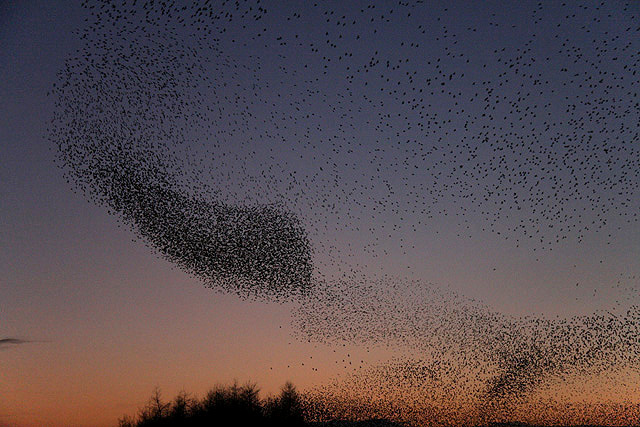Synthetic particles that flock like birds
Ars Technica » Scientific Method 2013-01-31

Scientists have built a self-organizing system of synthetic particles that assemble into clusters in a way that mimics the complicated organization of flocks of birds or colonies of bacteria. The particles form a “living crystal” that moves, swirls, and adjusts to heal cracks.
Self-assembly is a common way to build materials. Often, individual building blocks stick together due to inherent attractions, like bases of DNA bonding to form a nanotube, proteins gathering to form a helical virus coat, or nanospheres gathering to form a photonic crystal.
But what draws flocks of starlings, schools of fish, or rafts of ants together? Flocking or schooling can be a social behavior. However, the similarities among these phenomena, regardless of the creatures involved, led NYU's Jérémie Palacci and his colleagues to wonder if an underlying physical principle could also govern the organization process.
Read 7 remaining paragraphs | Comments